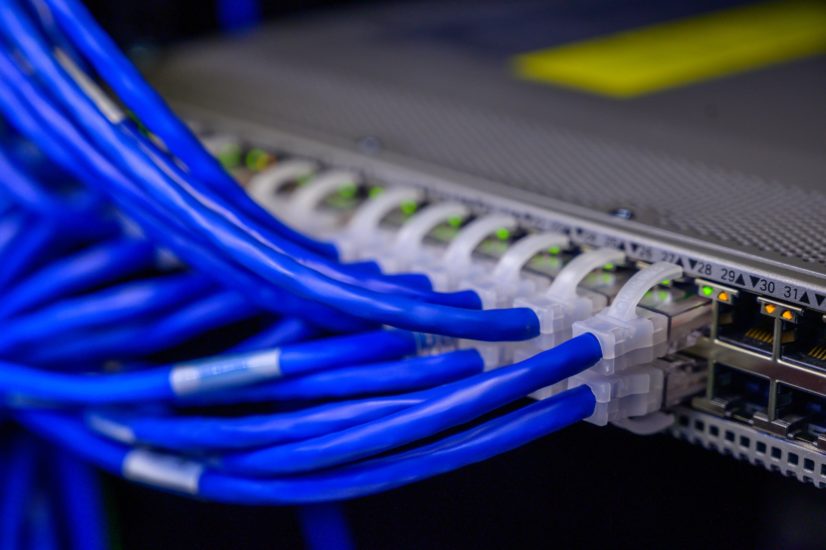Broadly speaking, the term “network management” is used to describe the provisioning, configuration, measurement and management of a computer network.
As a business function, network management is dedicated to sustaining network infrastructure for an organization. This function requires the use of both software tools and hardware devices. Understanding network management is an important aspect of any modern-day business operation.
What is Network Management?
Most modern companies rely on a digital network for communication and collaboration. Some organizations use their network as part of a production process to generate digital and/or physical products. Some use their network as an integral part of the services they provide.
Keeping a network up and running efficiently is therefore critical to the sustainability of most businesses. This is no easy task, as a modern computer network can be extremely complex, with a large infrastructure that’s challenging to manage.
One major challenge is incorporating new devices and systems into an existing network. New technologies are always being developed and there’s always pressure to adopt the latest technology. Companies that are able to quickly integrate new technologies and devices into their network can position themselves ahead of the competition. The integration of new devices is further complicated when a company allows its employees to use their own digital devices on the network.
Different Aspects of Network Management
Network management can be subdivided into several different smaller functions, including provisioning, configuration, measurement, maintenance and security.
Network provisioning involves the initial setup of a network and its associated devices. This entails configuring servers, providing access to users, creating containers and other tasks.
Once the work of provisioning a network has been completed, a network configuration arranges infrastructure based on assets, desired outcomes, business goals, limitations and other factors. A company’s network can be reconfigured if necessary.
Network measurement involves the daily monitoring and testing of a network. This function is designed to ensure optimal performance, which is the speedy transfer of data across the network. Network managers measure traffic and look for ways to boost both bandwidth and response time. Effective network measurement can quickly identify challenges, minimize downtime and boost software performance.
Network maintenance involves fixing problems and performing upgrades. This could involve replacing hardware like routers and switches or it could involve the use of software-based solutions.
Network security is an area of cybersecurity that is designed to safeguard networks against attack and unauthorized access. People in charge of network security use firewalls and fault management systems to protect the network and address security problems.
In a modern approach to network management, many of these functions are performed with the help of automation.
Using Network Management Systems
Having a strong management system in place is critical to keeping a network up and running with minimal overhead or downtime. The typical network management system is designed to handle a complex network through the use of wired and wireless technologies. A good network management system includes automated alerts and works well with standard devices.
There are two aspects of network management that must be considered by a system: underlay and overlay network management. Underlay networking is focused on the coordination of hardware devices such as routers, switches, hubs, modems and gateways. Overlay not working is focused on the digital connections and various permissions among users, devices and applications.
Network management systems often include a high degree of automation. When repetitive and standard network tasks can be automated, it supports a high level of service availability and efficiency.
Cloud vs. On-Premises – Two Methods of Network Management
Companies looking to use a network management system can take either a cloud-based or an on-premises approach.
Cloud-based systems tend to have low initial costs because they do not require the use of local servers. Cloud-based systems also support a high degree of agility because they offer access from just about anywhere.
An on-premises solution tends to perform better than a cloud-based solution. For companies that demand a high level of processing power, such as those companies that work with AI and machine learning, this may be a superior option. An on-premises solution can also provide a greater degree of security for network data if access is limited to users that are on site.
Both methods of network management are available through third-party providers. Taylored Systems leverages Hoosier Vue for Network Monitoring as a service. Outsourcing this business function is attractive for companies that do not have IT staff with the bandwidth to handle all of the various network management responsibilities.
How Taylored Systems Can Help
Partnering with Taylored Systems’ managed IT services, including network management, can translate into a number of business benefits, including lower costs, less downtime, greater efficiency and greater flexibility.
When network management responsibilities are outsourced, it gives IT staff more time to focus on innovation or revenue-generating tasks. Taylored Systems can provide customized solutions based on your company’s network management needs, from simple monitoring to helping with upgrades. A trusted partner not only supports network performance but also makes it easier to boost efficiency and make upgrades.
Please contact us today to learn more about the various network management solutions we can provide.

